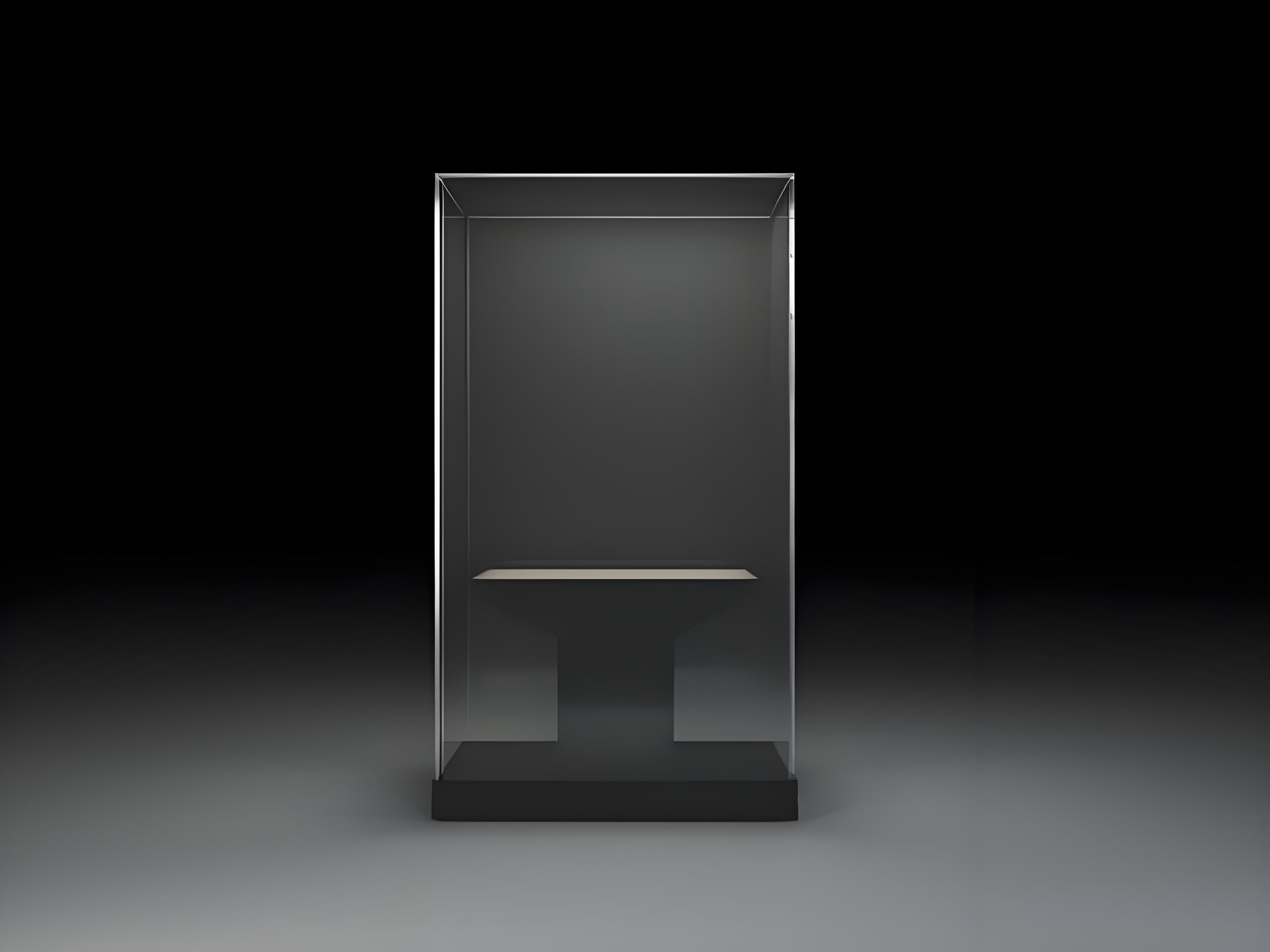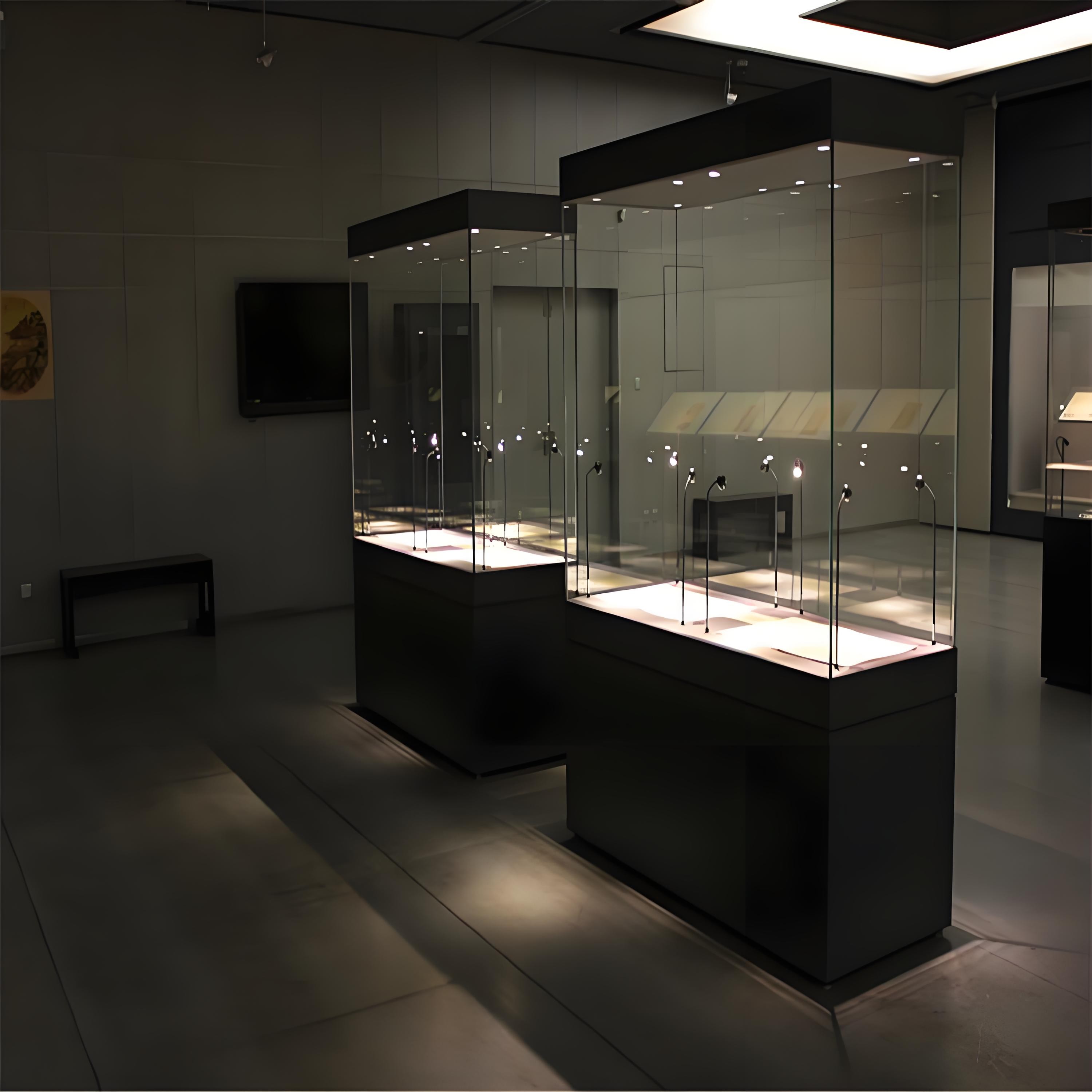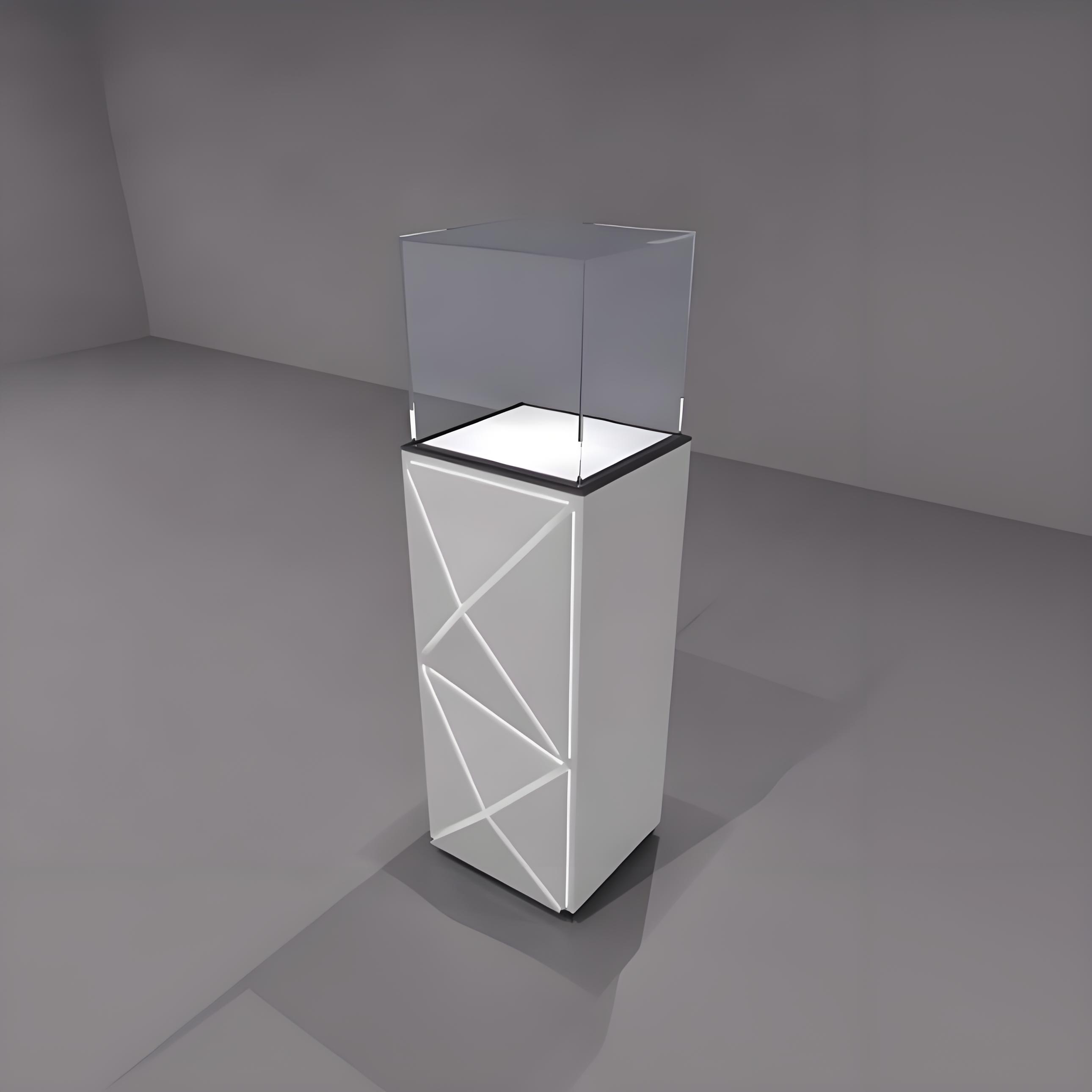& nbsp; In the exhibition design of museums, the low-reflection glass constant temperature and humidity display cabinet is not only the "guardian" of cultural relics, but also the "bridge" of dialogue between the audience and history. Faced with the stringent environmental requirements of precious cultural relics, display cabinets need to integrate optical, material and environmental control technologies to achieve multiple protective functions.
& nbsp; I. Optical performance: "visual purification" technology
of low reflection glass & nbsp; 1. Core indicators: reflectivity ≤ 1%, transmittance ≥ 98%
2. Technical realization: The magnetron sputtering coating process is used to deposit multiple layers of nano-scale metal oxide films on the glass surface to effectively suppress the reflection of ambient light.
& nbsp; 3. Application scenario: In the special exhibition of "Qianli Jiangshan Tu" of the Palace Museum, the low-reflection glass enables the audience to clearly observe the details of the paintings in the strong light environment, reduces the glare interference by 95%, and improves the visual reduction of the exhibits.

& nbsp; II. Micro-climate control system: constant temperature and humidity accuracy
of ± 0.5 ℃ 1. Technical reference: GB/T 2423.1-2008 Environmental Test Standard
& nbsp; 3. Humidity regulation: SPH sensor + electronic humidification/dehumidification module to ensure humidity fluctuation ≤ ± 2% RH.
& nbsp; & nbsp; & nbsp ; 4. Data case: The actual measurement of a bronze display case shows that the fluctuation value of the system is only 0.8% in 24 hours under the environment of 70% RH, which effectively inhibits the corrosion reaction.

& nbsp; III. Material barrier: "sealing matrix"
of multiple protection & nbsp; 1. Structural design:
Inner container: SUS304 stainless steel fully welded cavity, with corrosion resistance up to 1000 hours of ASTM B117 salt spray test;
Insulation layer: 100mm high-density glass fiber cotton + vacuum insulation board, thermal conductivity ≤ 0.018 W/ (m · K);
Sealing system: EPDM rubber + silica gel double sealing strip, air tightness up to ISO 10648-2 Class C standard.
& nbsp; & nbsp; & nbsp; IV. Intelligent Monitoring: Internet of Things + AI Preventive Maintenance
& nbsp; & nbsp; & nbsp; 1. Sensor network: PT100 temperature sensor + Honeywell humidity probe, data acquisition frequency 1 time/s;
& nbsp; 2. Cloud platform: APT-COM data system supports FDA 21 CFR Part 11 compliance records and real-time remote monitoring;
& nbsp; & nbsp ; 3. AI algorithm: predict the trend of temperature and humidity based on historical data, and warn abnormalities 48 hours in advance.
& nbsp; 4. Application value: After the Dunhuang Research Institute adopts this technology, the maintenance cost of the display cabinet is reduced by 30%, and the fault response time is shortened to 15 minutes.

& nbsp; & nbsp; & nbsp; V. Safety protection: multi-dimensional risk resistance system
& nbsp; 1. Physical protection:
& nbsp; Security module: RFID cultural relic identification + vibration sensor + intrusion alarm system, linked with museum security center.
& nbsp; 2. Environmental protection:
Ultraviolet blocking: UV transmittance of glass ≤ 0.1%, with LED cold light source (UVA < 1 μW/LM);
& nbsp; & nbsp; Shockproof design: Built-in nitrogen spring shock absorption device, with seismic intensity up to level 8.
& nbsp; Huabo Art Exhibition has been deeply engaged in the design, customization, production and installation of exhibition cabinets for more than ten years, creating quality with ingenuity and leading the future with innovation. We focus on providing one-stop display cabinet solutions
for museums, art galleries, memorials, art galleries, science and technology museums, history museums, memorials and other cultural institutions.previous:What is an overhanging cabinet?
next:Display Cabinet Maintenance Strategy: Scientific Maintenance and Long-term Management of Different M